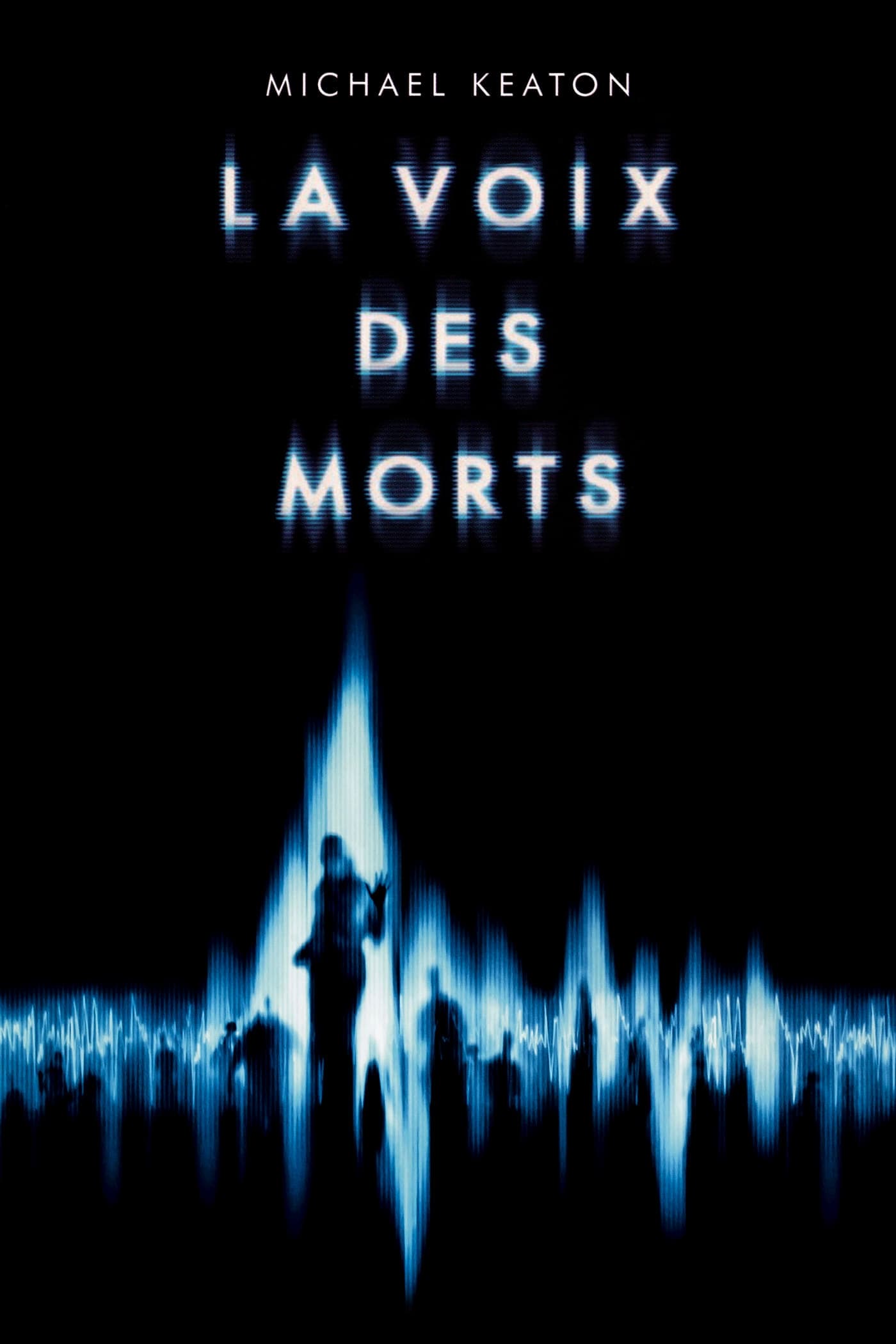Spoilers:
- Babette cheats with Dylar dealer.
- Jack tries to kill Mr. Gray.
- Airborne Toxic Event hits town.
- Jack obsessed with death fear.
- Family watches excessive TV together.
- Dylar pill addiction subplot.
- Bizarre Hitler Studies academic setting.
White Noise: Statistics
White Noise is a novel by Don DeLillo, published in 1985.
Basic Information
- Author: Don DeLillo
- Genre: Postmodern Literature
- Publication Year: 1985
- Publisher: Viking Press
Novel Composition
- Pages: Approximately 320
- Chapters: 40
- Parts: 3
Critical Reception
White Noise received widespread acclaim.
- Awards: National Book Award for Fiction (1985)
- Noted for: Satire on consumer culture, media influence, and death
Themes & Motifs
- Consumerism
- Technology and Media
- Fear of Death
- Identity
Sales & Editions
- Sold over 2 million copies worldwide
- Translated into more than 20 languages
- Available in print, ebook, and audiobook formats
Adaptations
- Film adaptations: Optioned but not produced
- Stage adaptations: Several plays based on the novel
DeLillo’s “White Noise” illuminates our modern society’s obsession with simulated realities, the fear of death, and the manipulation of information, through a masterpiece of postmodern storytelling. The novel offers a haunting critique of consumerism, often using comedy and surreal details to highlight these profound, yet subtle messages. Centered around Jack Gladney, a professor of Hitler Studies in a Midwest American town, the story unfolds with a raw depiction of life held in the grip of constant fear. Our protagonist is emblematic of the human struggle against the inevitable – death. His journey is one of stark introspection, offering the reader an engaging insight into the underpinning anxieties of contemporary life. Inundated by television, radio, and information technology that emit ‘white noise’ – a metaphor for ceaseless data and distraction – the characters personify the discomfort of establishing authentic relationships amidst this media-saturated culture. DeLillo’s profound exploration of these themes provokes the reader to question the role of artificial constructs in their lives. Furthermore, the ‘Airborne Toxic Event’ and ‘Dylar’ – a fictional drug to alleviate the fear of death – encapsulates DeLillo’s powerful commentary on our futile attempts to control nature and fate. This overt dependence on technology and drugs signifies a deep collective yearning for an escape from reality and the unknown, thus making his narrative emotionally profound.DeLillo’s ability to craft humor amidst the gravity of existential quandaries creates an enduring resonance, while his incisive prose captures the subtle absurdities of our contemporary existence. “White Noise” hence serves as an intriguing mirror to our modern society, luring us into a profound contemplation of our identities and anxieties. In its wisdom, the novel encourages us to discern between meaningless white noise and the authentic music of life.
Introduction to “White Noise”
“White Noise” is a novel by Don DeLillo, published in 1985. Set in postmodern America, it explores themes of consumerism, technology, and death. The book won the National Book Award for Fiction and remains one of DeLillo’s most renowned works.
Interesting Facts and Speculation
- DeLillo’s eighth novel, often considered his breakout work.
- The book’s title, “White Noise,” refers to the background sounds of everyday life, underscoring themes of distraction and technological saturation.
- Known for its prescient take on media influence and environmental disasters.
- Speculation stems from its prophetic depiction of ‘The Airborne Toxic Event,’ similar to real-world chemical accidents.
Bizarre and Interesting Elements
- Characters have bizarre obsessions, revealing human anxiety about death.
- The story is filled with dark humor, blending the absurd with the mundane.
- DeLillo uses fragmented, repetitive dialogue to create a sense of dissonance.
- Supermarkets serve as a recurring motif, symbolizing consumer choice and existential dread.
Public Perception Over Time
Initially met with mixed reviews, the novel gained traction over time.
Critics praised its incisive social commentary, while some found its style challenging.
It became a staple in academic settings, often cited in discussions of postmodern literature.
Overall, perception shifted from skepticism to recognition of its cultural significance.
White Noise: Beat by Beat Breakdown
The Set-Up: Meet Jack Gladney, a professor obsessed with death, navigating life in a small Midwestern town with his fourth wife, Babette, and their blended family. They’re your not-so-typical American family drowning in consumer culture and media noise.
The Fear of Death: Jack and Babette are both secretly terrified of dying. This obsession becomes a central theme, driving their actions and thoughts. It’s the white noise that constantly hums in the background of their lives.
Airborne Toxic Event: Disaster strikes when a chemical spill forms a toxic cloud, forcing the Gladney family to evacuate. This event brings Jack face-to-face with his mortality when he’s exposed to the substance, amplifying his fear of death.
Dylar: The search for a cure to their death anxiety leads Babette to secretly take a drug called Dylar, which has supposed anti-death properties. But there’s a catch: it doesn’t work as intended and comes with serious side effects.
The Conspiracy: Jack finds himself down a rabbit hole trying to find Dylar for himself, leading to a confrontation with a shady character connected to the drug. This obsession with beating death at its game only adds layers to the fear and confusion.
The Resolution?: After a series of bizarre and jarring events, including an attempt to kill the man who provided Babette with Dylar, Jack ends up being shot. This confrontation with physical harm and the ensuing recovery somehow brings him closer to accepting mortality.
The Ongoing Noise: The story leaves us pondering if Jack or Babette come any closer to overcoming their fear of death. The white noise of modern life—its distractions, its media, its omnipresent consumer culture—continues unabated, hinting at the inescapable environment of the postmodern world.
Final Thoughts
‘White Noise’ isn’t just about fear of death; it’s a snapshot of postmodern anxiety, satirizing the American way of life. DeLillo packs a punch with his sharp commentary on how we cope with our existential dread amidst the ever-present hum of white noise. It’s a compelling, fast-paced read that leaves you pondering long after the last page.

Understanding “White Noise” by Don DeLillo
Don DeLillo’s “White Noise” opens with a straightforward yet immersive introduction. The reader is introduced to the protagonist, Jack Gladney, a professor of Hitler Studies. This initial glimpse reflects DeLillo’s themes of modern life, suburban decay, and the pervasive influence of consumer culture.
Story Formula Breakdown
The structure of “White Noise” can be broken down effectively using a common story formula:
- Exposition: Introduction to Jack Gladney and his family, setting up the tone and environment of contemporary American life.
- Inciting Incident: The toxic airborne event that creates panic and existential dread among the characters.
- Rising Action: Exploration of characters’ responses to the crisis, relationships, and a growing obsession with death and existential questions.
- Climax: Jack’s confrontation with his fears surrounding death and the chaos of the airborne toxic event.
- Falling Action: The fallout from the incident and characters’ attempts to navigate their altered realities.
- Resolution: Open-ended conclusions about life, death, and the seemingly mundane battles against the noise of existence.
Character vs. Story Driven
The story is primarily character-driven. The focus remains on the thoughts and experiences of Jack Gladney, his family, and the existential themes that arise. The narrative revolves around characters and their interpretations of a world filled with chaos and superficiality, making the character development significant to the overall message.
Memorable Character Elements
Jack Gladney is memorable for his unique perspective on life and death. His role as a professor of Hitler Studies serves as a backdrop for his internal struggles with identity, mortality, and the absurdity of modern life. His quirks and introspections are intensified by the mundane reality he grapples with, allowing readers to connect deeply with his character.
Main Characters Overview
- Jack Gladney: The protagonist. A professor who studies Adolf Hitler, Jack’s character highlights themes of academic detachment sprinkled with personal existential crises.
- Babette: Jack’s wife, who embodies the fear of losing control. Her susceptibility to societal pressures adds depth to the story’s exploration of consumer culture.
- Steffie: One of Jack’s children, portraying innocence amidst the chaos. She reflects the impact of adult fears on the younger generation.
- Denise: Another child, who often serves as a voice of youthful skepticism, driving discussions of life and death.
- Wilder: Jack’s son, who provides moments of humor and clarity, often contrasting Jack’s anxiety-driven narratives.
Story Flow Template
Here’s a streamlined template for writing a similar story flow:
- Opening Scene: Introduce the protagonist and their world. Set up modernity’s absurdity and anxieties.
- Conflict Introduction: Present an inciting incident that challenges the protagonist’s normalcy and beliefs.
- Character Exploration: Dive into character relationships, fears, and obsessions stemming from the conflict.
- Climactic Moment: Create a confrontation regarding the core fears and themes of the story.
- Consequences: Show how the characters respond post-climax, reinforcing or challenging prior beliefs.
- Final Thoughts/Resolution: Maintain an open-ended conclusion, implying the ongoing nature of the existential battles faced.
Simple Synopsis of the Story
In simple terms, “White Noise” is about the challenges of modern life filled with fear of death, consumerism, and life’s inevitable absurdities. Through Jack Gladney’s experiences, the narrative explores how people cope with existential dread and the quest for meaning amid chaos.
Themes and Motifs
The book addresses several themes:
- Death: A prevalent fear that drives much of the narrative and character motivations.
- Consumerism: The depiction of modern society’s obsession with material goods and media distractions.
- Communication: The role of noise, both literal and metaphorical, in shaping personal relationships and modern life.
- Technology: Reflects on how technological advancements impact human connections and perceptions of reality.
Writing Techniques
DeLillo employs minimalist dialogue, vivid imagery, and contrasting characters to highlight complex themes. The writing often feels abstract but is grounded in relatability and authenticity, making it accessible despite its depth. Utilizing these techniques can help one craft a compelling narrative that resonates with readers.
Conclusion on Memorable Elements
Ultimately, “White Noise” is remembered for its profound exploration of fear, identity, and human connections amid contemporary life’s noise. DeLillo’s sharp observations challenge readers to reflect on their own perceptions of reality. The tension between the mundane and the profound creates a dynamic narrative that provokes thought and discussion long after the final page.
Reading “White Noise”
To fully appreciate “White Noise,” readers should engage with its themes and characters actively. Pay attention to the subtext that informs Jack’s observations. Each detail from the family dynamics to societal critiques builds upon the book’s core messages. While the language is precise, the implications are vast, allowing for multiple interpretations and reflections.
Impact of “White Noise”
The impact of “White Noise” on contemporary literature cannot be overstated. It opened doors for postmodern writing that addresses societal fears, character introspection, and the absurdity of existence. Readers are encouraged to analyze the text through various lenses, enhancing its relevance in today’s context.
Final Remarks
“White Noise” serves as a compelling commentary on modern life that is both critical and introspective. Through relatable characters and sharp prose, Delillo crafts a narrative that resonates across generations. By examining contemporary themes and timeless questions, “White Noise” remains a remarkable piece of literature that challenges and engages readers.
Inciting Incident in “White Noise”
The inciting incident occurs when Jack and his family are involved in a toxic chemical spill. This event disrupts their mundane lives and introduces the theme of fear and mortality. It symbolizes the chaos underlying the seemingly controlled lives of the characters.
Act Structure Analysis
The book is divided into three main acts:
-
Act 1: Establishing Normalcy
This act introduces Jack Gladney, his family, and their ordinary lives in a small town. The daily routines, including Jack’s role as a professor and the family’s interactions, seem mundane but are infused with underlying anxiety.
-
Act 2: Disruption
The chemical spill disrupts the characters’ lives. The community reacts with panic and fear, highlighting societal issues like consumerism and media saturation. This act explores the characters’ responses to this chaos, revealing deeper themes of dread and connection.
-
Act 3: Resolution and Reflection
The final act deals with the aftermath of the incident. Characters confront their mortality and existential dread. Jack’s obsession with death and the absurdity of life culminate here, leaving readers with a blend of unease and contemplation.
Climax of the Story
The climax occurs when Jack confronts his fears about death during a tense hospital visit after exposure to the chemical spill. This moment is charged with emotional capital. The build-up includes Jack’s increasing paranoia and the overarching theme of death that permeates his conversations and interactions.
Tension and Release in “White Noise”
The book builds tension through Jack’s obsession with death, media saturation, and family dynamics. The narrative flares with moments of panic surrounding the chemical spill, creating a constant state of unease. Release comes in small doses—often through dark humor or philosophical insights—that allow readers to breathe amidst the anxiety. The balance of these elements maintains a gripping pace throughout the narrative.

Ending of White Noise Explained
The ending of “White Noise” revolves around Jack and his family’s confrontation with death and the impact of a toxic event. They experience a chemical spill, which forces them to deal with their mortality. The final moments show Jack reflecting on the nature of life and death, and the overwhelming presence of death feels more pronounced.
Categorizing the Ending
Writers might categorize this ending as existential and absurdist. It highlights the absurdity of modern life and the constant fear of death in the face of consumerism and technology.
Symbolic, Thematic, and Speculative Meanings
- Death’s Presence: The ending symbolizes how fear of death permeates everyday life.
- Technology’s Role: It critiques how technology both shields us from and exposes us to danger.
- Family Dynamics: It emphasizes the fragility of family connections amid chaos.
Lose-ends and Payoffs
The ending resolves the ongoing tension between Jack’s fears and his family’s dynamic. The specter of death, which loomed throughout the novel, culminates in a confrontational manner, tying together Jack’s internal struggles with external realities.
Character Changes
By the end, Jack is more aware of his mortality. He moves from a place of denial to a reluctant acceptance of death. His relationship with his family becomes more introspective as they navigate the uncertainty together.
Lessons for Writers
Writers can learn the importance of theme resolution. The ending illustrates how to encapsulate a character’s journey with a focus on existential issues. It’s a reminder to connect personal fears to larger societal themes and maintain character consistency throughout the narrative.
Dialogue Style in White Noise
The dialogue in “White Noise” by Don DeLillo is characterized by its sharpness and disjointed quality. Characters engage in conversations that often feel disconnected yet are laced with layers of meaning. This reflects the chaotic nature of modern life, echoing themes of consumerism and existential dread.
Examples of Dialogue
- “We’re not sure what ‘White Noise’ is, but we feel it.”
- “I want to be in control of my family’s future.”
- “Death is a problem that can’t be solved.”
Quintessential Character Moment
A key moment is when the characters discuss their fears and anxieties about death. This encapsulates their struggles and the absurdity of their existence, embodying DeLillo’s theme of how modern life is often dominated by fear of the inevitable.
Iconic Lines
- “The universe is a huge, chaotic place.”
- “I’m a man who believes in the power of the mundane.”
Uniqueness of the Dialogue
What makes the dialogue unique is its blend of the mundane with profound existential queries. Characters often speak in a manner that mimics real-life chatter, yet their words raise philosophical questions. It captures the contradictions of modern existence.
Dialogue Density
The script is quite dialogue-heavy, consisting of long conversations that explore complex themes without lengthy exposition. This keeps readers engaged while also provoking thought.
Realism of the Dialogue
The dialogue feels realistic, reflecting actual conversations that might happen in a family or social context. However, it also feels curated, as if DeLillo has honed the characters’ interactions to emphasize specific themes.
Writer’s Lessons
- Embrace disconnection in dialogue to reflect modern themes.
- Use banter to reveal deeper existential concerns subtly.
- Balance mundane conversation with profound questions.
Scene Walkthrough
In one scene, Jack and his family sit around the dinner table. The conversation bounces from the trivial—what to eat—to deeper fears about mortality. Jack makes a joke about the health risks of processed food. His wife counters with statistics about life expectancy.
This shift from the light-hearted to the weighty shows how the characters cope with anxiety. Jack’s humor is a defense mechanism, while his wife’s cold hard facts signify a more rational approach to fear. This back-and-forth captures the essence of their dynamic, revealing the tension between comfort and reality.
Overall, the dialogue in “White Noise” serves to highlight the absurdity of daily life and the constant undercurrent of dread that runs through it. It reflects a world where communication is frequent but often shallow, yet laced with deeper existential themes.
White Noise
In the hum of the mundane,
where silence wears a mask,
chaos whispers secrets,
cloaked in static’s dance.
Thoughts emerge
like ghosts at dawn,
drifting through the ether,
a symphony of accident.
We are the echoes
of unasked questions,
each sigh a manifesto,
each twitch a revolution.
And in the end,
we find solace not in clarity,
but in the delicious absurdity,
of a world that hums.
- Noise is the canvas,
- silence, the frame.
- Listen closely,
- to the echoes of the mundane.
Writing Lessons from White Noise
Don DeLillo’s “White Noise” offers profound insights into writing. Here are some unique lessons:
-
Embrace the Mundane
DeLillo finds depth in ordinary life. Explore the routine. Make it compelling.
-
Use Dialogue as a Mirror
Dialogue reveals character. Let conversations reflect themes and conflicts. Avoid small talk.
-
Mix High and Low Culture
Blend intellectual concepts with pop culture. Create contrast. Challenge readers.
-
Build a Strong Sense of Place
The setting is a character. Make it vivid. Integrate it into the plot and mood.
-
Focus on Absurdity
Highlight the absurd in everyday life. It provokes thought and engagement.
-
Address the Unseen
Explore themes like fear, death, and media saturation. Don’t shy away from uncomfortable topics.
-
Layer Your Narrative
Use multiple viewpoints and timelines. Create a rich, textured story.
-
Stay Detached
Write with a sense of distance. This allows readers to engage critically with the material.
-
Invent New Language
Play with language. Create phrases that reflect the story’s themes. Keep it fresh.
-
Question Reality
Blur the lines between reality and fiction. Challenge readers’ perceptions.
Don DeLillo Discography
- Americana (1971)
- End Zone (1972)
- Great Jones Street (1973)
- Ratner’s Star (1976)
- The Names (1982)
- White Noise (1985)
- Libra (1988)
- Mao II (1991)
- Underworld (1997)
- Cosmopolis (2003)
- Falling Man (2007)
- Point Omega (2010)
- Zero K (2016)
- The Silence (2020)
Writing Style
Don DeLillo’s style is characterized by a blend of sharp social commentary, fragmented narratives, and an exploration of contemporary American life.
1. Review by M. Keith Booker – “White Noise is a book about the fear of death, written for people who are afraid to die. It’s a book about the tremendous and constantly present mortality of human life, and about the variety of ways people struggle to confront or deny that mortality.” His review can be found here: [link](https://www.google.com/search?q=white+noise+book+review)2. Review by Michiko Kakutani, New York Times – ”
- White Noise (novel) – Wikipedia
- I just finished White Noise by Don Delillo and was wondering what …
- White Noise: (Penguin Classics Deluxe Edition … – Amazon.com
- White Noise by Don DeLillo | Goodreads
- White Noise by Don DeLillo and the internet : r/books
- What Don DeLillo’s ‘White Noise’ Can Tell Us About Life Today …
- Realistic Absurdity in DeLillo’s WHITE NOISE – CRAFT
- Delve Seminar Summary: Don DeLillo’s ‘White Noise’ & the 2016 …
- Feminist Fridays: Don DeLillo’s White Noise is Relevant Again …
- Hitler & Elvis, same stuff: Simulacrum in Don DeLillo’s White Noise …




Leave a Reply